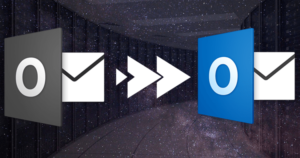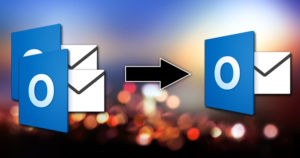Sometimes, users need to share their contacts with others or transfer them to another email address. For this, they look to export Outlook contacts to vCard (or VCF) format to easily share their contacts with others. vCard is a widely accessible file format supported by numerous email clients, smartphones, and other contacts management applications. Users can also use the vCard Format to keep a backup of their contacts if they are planning to transfer to another email client.
We will cover a few manual methods to export Outlook contacts to vCard format, making it easy to share with others. Along with it, we will explore the professional way to complete this exporting process in an efficient manner.
Reasons behind exporting Outlook contacts as vCard (VCF)
Users will have various benefits of exporting Outlook contacts to VCF or vCard format, a few common of them are listed below.
- vCard or VCF is a universal format, and almost every email client supports it. That is why it is the best format for exporting contacts if users are looking to backup or migrate their contacts.
- Moreover, sharing the vCard format is easy. Users can easily share this format using email, cloud storage, or even using messaging applications.
- Future mishaps, like accidental data loss, can affect the important contacts saved in the Outlook program. Therefore, it would be better to have a backup copy of the Outlook contacts in vCard or VCF format.
These are the common reasons why users need to export their Outlook contacts to vCard format. Moreover, users can have other reasons that encourage them to move Outlook contacts to VCF format.
Techniques to move contacts from Outlook to vCard format
Users can implement two techniques, manual and professional, to export Outlook contacts to vCard format. Here, we will discuss both methods so that users can pick the best solution for their Outlook contacts exporting process. We start by learning the solutions with the manual methods and then explore a third-party tool to export Outlook contacts to vCard format.
Exporting Outlook contacts to vCard format using manual ways
Here, we will explain two manual methods to export Outlook contacts to VCF format. We will discuss a detailed stepwise working of each solution to complete this task without any hassles. Let us understand them.
Method 1: Use the Save As option to export contacts from MS Outlook
In this solution, we will share how users can use the Outlook Save As option to export Outlook contacts to vCard format.
- Open the Microsoft Outlook in your system.
- Go to the People section to see all the contacts saved in your Outlook.
- Now, select the contacts from the list you want to export to vCard format. If you want to export all contacts, kindly press the Ctrl + A key to select all contacts to export.
- After selecting the contacts, kindly click the File
- Then, tap the Save As button and select the location where you want to save the resultant vCard format.
- Now, in the Save As type dropdown, choose the vCard Files (.vcf).
- Give a name to the file and hit the Save
Outlook will save individual .vcf files for each contact if you choose to process several contacts at once. Using these steps, users can easily export Outlook contacts to vCard format.
Method 2: Microsoft Outlook Export/Import wizard to export contacts
If you use Outlook 2016 or later, this is the best manual way to export Outlook contacts as vCard format. In this method, we are going to learn how to use the Outlook Export/Import wizard to export contacts. Follow the below steps to use the Outlook Export/Import option to move contacts from Outlook to vCard (.vcf) format.
- Launch the Microsoft Outlook program and go to the File
- Thereafter, go to the Open & Export and click the Export/Import
- Now, you need to choose the Export to a file option and hit the Next button.
- Then, select the Comma Separated Value (CSV) option and continue with the Next
- Choose contacts to export and press
- After that, save the CSV file in your system.
Once you save the CSV file in your system, use software or an online CSV file converter to convert it into vCard (VCF) format. These are the two best manual ways to export Outlook contacts to vCard format.
A professional way to move contacts from Outlook to vCard format
Organizations require quick and effective solutions to export their large number of contacts to vCard format. Therefore, they look for professional third-party tools to complete their tasks instantly and more efficiently. We recommend users export Outlook contacts to vCard format using the Shoviv Outlook PST Repair Tool. This software not only converts Outlook contacts into VCF format but also provides other features to manage different tasks. It is proficient in repairing corrupted PST files and provides various file formats to save them locally.
Users can easily export their repaired PST file into EML, MSG, HTML and other file formats. Moreover, this tool exports all data from Outlook PST files, including emails, contacts, calendars, tasks, etc. It has no restrictions on adding multiple PST files at once and their size as well. That is why it is too easy for users to export even large-sized PST files using this software. This tool doesn’t harm/alter the folder hierarchy and meta properties of the emails while exporting PST file data. Moreover, it also has the advanced options to export PST files directly into the Live Exchange and Office 365 mailboxes.
Conclusion
Users can use manual methods to export Outlook contacts to vCard (VCF) format if they want to export a little bit of contacts. However, if you are a big organization or firm, you must go with a professional solution. In this blog, we have shared the Shoviv Outlook PST Repair Tool, which is a one-stop solution for your various tasks. Moreover, this software has advanced features, like the filter option, exporting PST to Office 365, repairing corrupted PST files, and many more. Users can also try this software’s free trial version in their system to check its capability and compatibility.
- How to Backup and Restore Emails in Webmail? - March 25, 2025
- How to Migrate Outlook to New Computer? - February 15, 2025
- Fix If Outlook Cannot Display the Specific Folder Location - February 1, 2025


